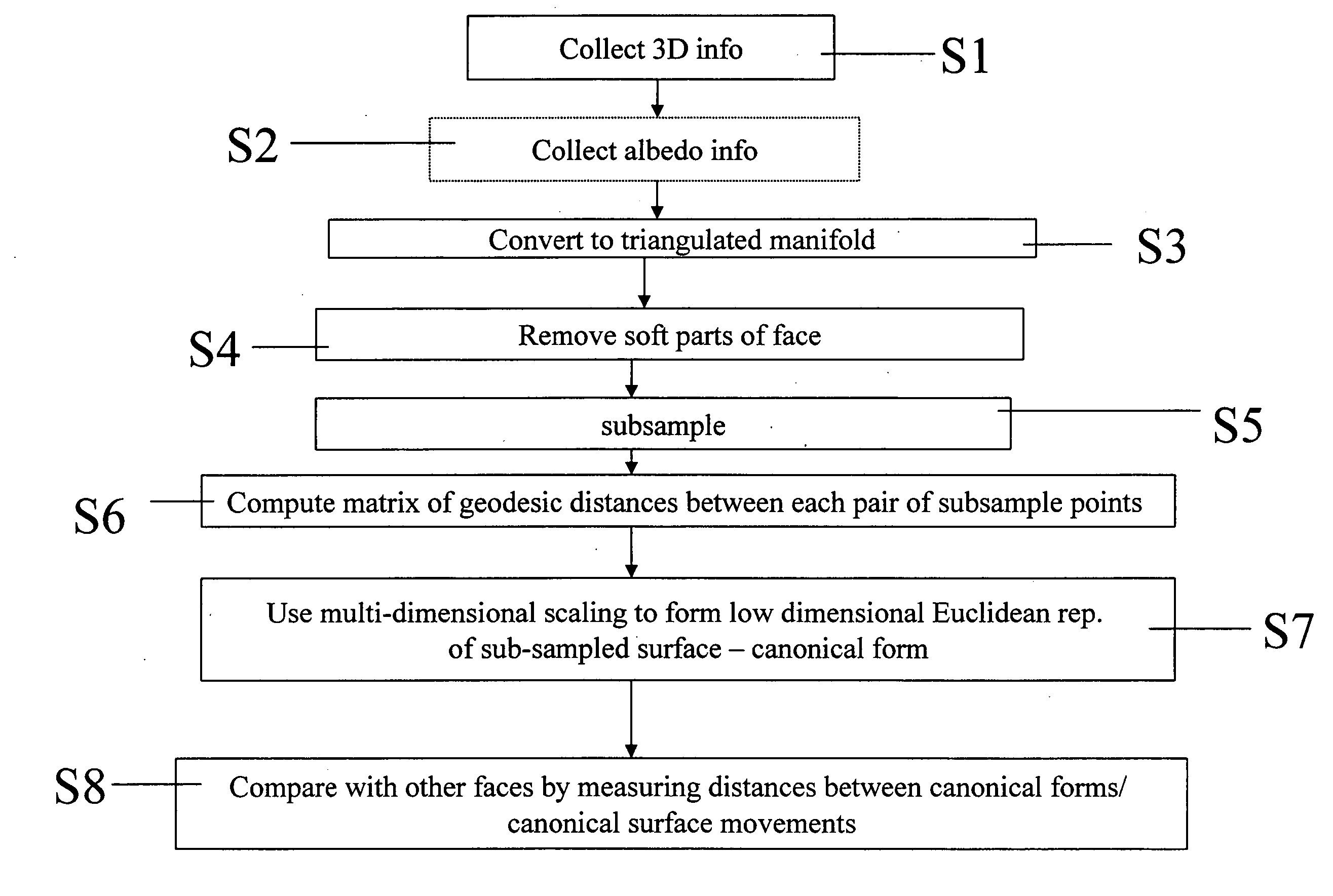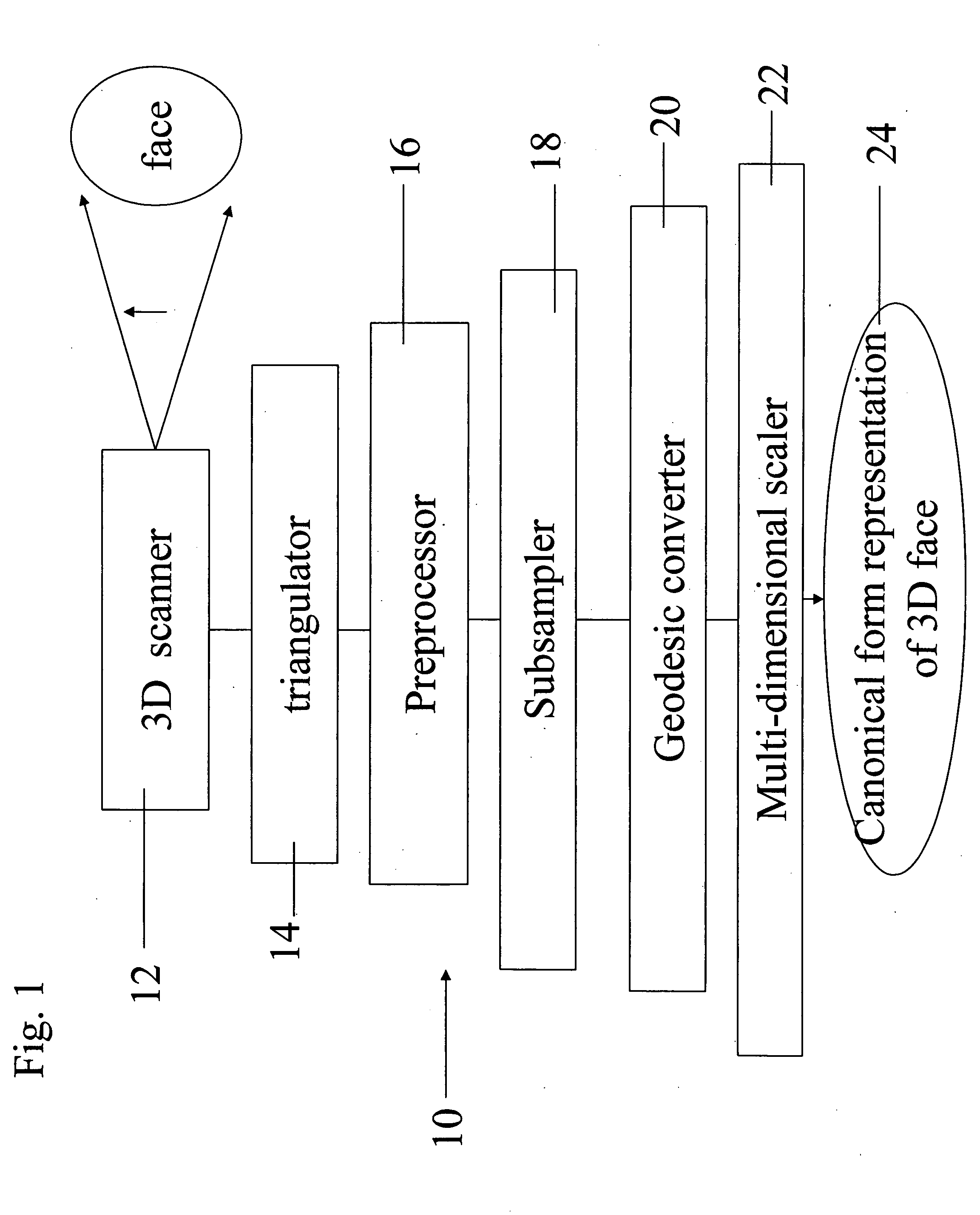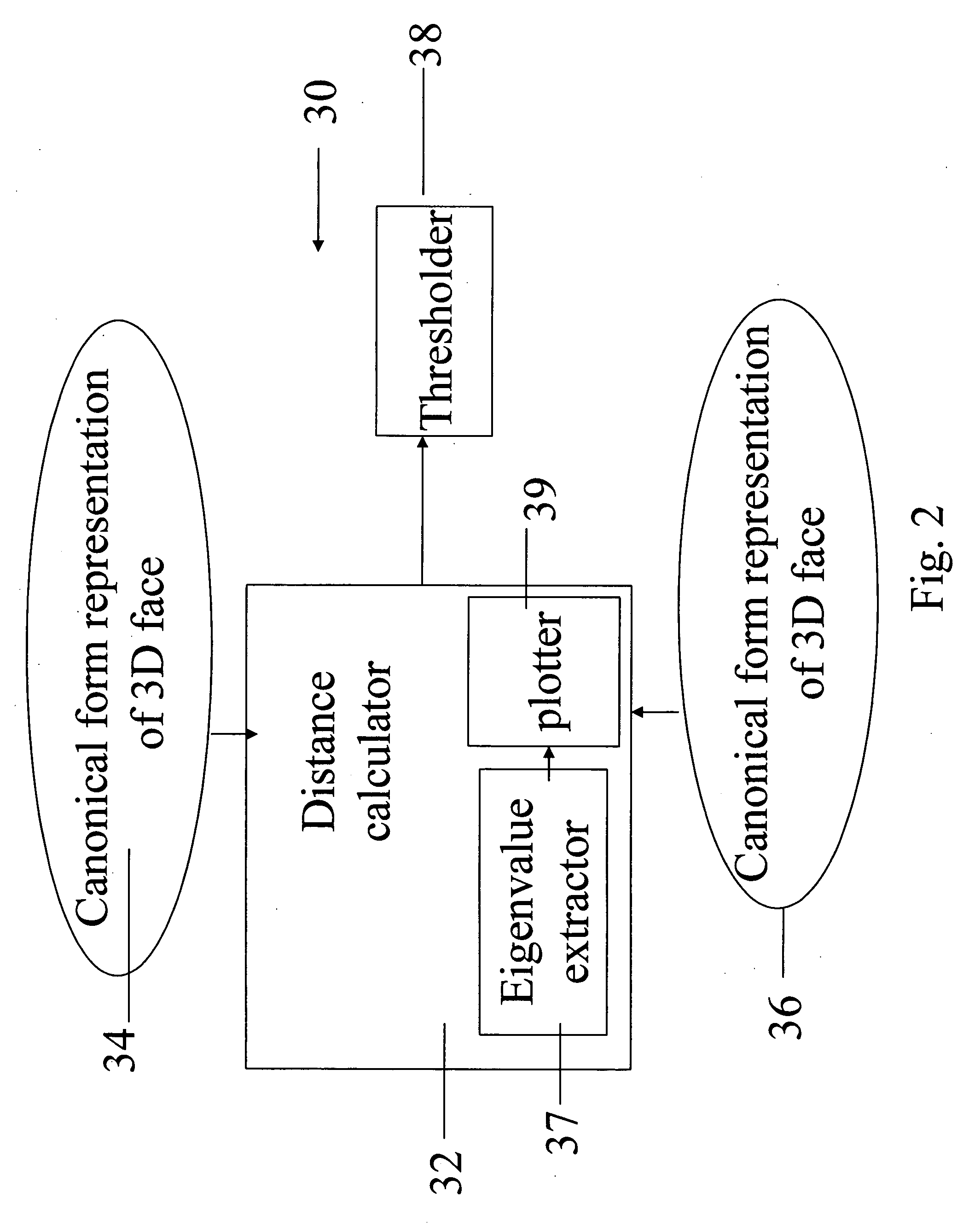Three-dimensional face recognition
a three-dimensional face and face recognition technology, applied in the field of three-dimensional face recognition, can solve the problems of inaccuracy and easy foolage, 2d approach suffers from sensitivity to illumination conditions and head rotation, and eigenfaces usually produce mediocre results when faced with real life rather than laboratory conditions
- Summary
- Abstract
- Description
- Claims
- Application Information
AI Technical Summary
Benefits of technology
Problems solved by technology
Method used
Image
Examples
Embodiment Construction
[0115] The present embodiments show a face recognition approach based on 3D geometric or topographical information. Given a 3D facial surface, a geometric bending-invariant canonical form can be obtained by sampling the surface, computing the geodesic distances between points on it (using the Fast Marching method) and applying Multidimensional scaling (MDS). MDS allows representation of the surface in a low-dimensional Euclidean space, the bending invariant canonical form, and the canonical form is a representation which can be used for classification in general and matching in particular.
[0116] Facial recognition using 3D geometry may be used on its own or to augment conventional 2D imaging. As the 3D geometry is independent of viewpoint and lighting conditions, accurate face classification can be achieved.
[0117] Before explaining at least one embodiment of the invention in detail, it is to be understood that the invention is not limited in its application to the details of const...
PUM
 Login to View More
Login to View More Abstract
Description
Claims
Application Information
 Login to View More
Login to View More - R&D
- Intellectual Property
- Life Sciences
- Materials
- Tech Scout
- Unparalleled Data Quality
- Higher Quality Content
- 60% Fewer Hallucinations
Browse by: Latest US Patents, China's latest patents, Technical Efficacy Thesaurus, Application Domain, Technology Topic, Popular Technical Reports.
© 2025 PatSnap. All rights reserved.Legal|Privacy policy|Modern Slavery Act Transparency Statement|Sitemap|About US| Contact US: help@patsnap.com



